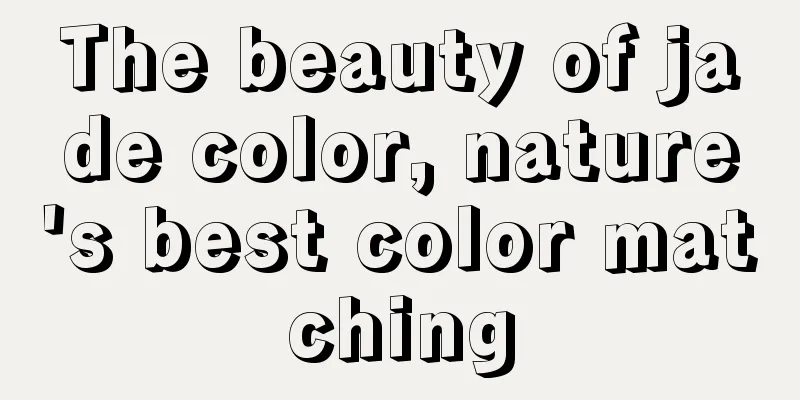What kind of jade is Sri Lankan purple jade? The truth is here

|
Sri Lanka is known as the "Emerald of the Indian Ocean". Sri Lanka is rich in high-quality gemstones, which makes it easy for people to associate it with the origin of jade. From a geographical point of view, more than 90% of the rocks on the island of Sri Lanka are from the Precambrian period, and the rock age is very old. 90% of the land has the potential to produce gemstones. Sri Lanka is not a jadeite producing area, but careful readers will find out when reading travel information that in addition to sapphires, Sri Lanka also produces a mysterious "purple jadeite". What exactly is this "purple jadeite"? After investigation, it was found that "purple jadeite" is actually a fictitious concept, and its true identity should be aventurine. "Aventurine" originally refers to the green mica quartzite produced in India. The one containing lithium mica is purple and is called purple aventurine. This is the true form of Sri Lankan purple jadeite. Therefore, Sri Lankan purple jadeite really has nothing to do with jadeite! So, in the jade market, what other low-end jades are there that are trying to change the concept? Indian Jadeite - Aventurine Aventurine, also known as aventurine on the market. Its material, apart from being visually similar to jade, is very different from natural jade in terms of weight, structure, and texture. In geology, aventurine is also called quartz stone. It is distributed in Yunnan, Guangxi, Guizhou, Beijing, and Xinjiang in China. The place with the largest mineral production is India, so it is also called "Indian Jade". Indian jadeite looks genuine, but its flaws are exposed once you handle it. First of all, Indian jade has a poor sense of weight and a loose structure, and it is easily broken after being hit. In addition, there are almost no identification standards for Indian jade internationally, so it is very common to be dyed and is not suitable for being worn close to the body. Latin Jade Prince——Guatemala Guatemala in Central America also produces jade mines. Guatemalan jade is its specialty jade. The refractive index of Guatemalan jade is 1.68 (the refractive index of jade is 1.66), the density is 3.32 (the refractive index of jade is 3.33), and the fiber interweaving structure is similar to that of jade. Some institutions can issue A-grade jade certificates for Guatemalan materials. The color of Guatemalan jade is very deceptive, but it also has many flaws. Although it is green in color, it has many black spots, and the green is also black and gray, and the tone is a bit weird. Moreover, the material of Guatemalan jade is generally very thin, because jade carvers will thin it to show a water head feeling similar to natural jade, so Guatemalan jade is generally used for inlay. Traditional Jade——Bai San Jade Ba San Yu is a companion mineral of jadeite. Like Shuemiaozi, although it comes from the same root as jadeite, it is not jadeite. Ba San Jade often appears in a "plastic surgery" form, because Ba San Jade generally has little water head, rough structure, and black color, but its floating flowers are still beautiful, so it is often acid-washed before being sold. After pickling, the Sanba Jade becomes very transparent and the price is low, which can confuse some people who have a "bargain" mentality and are greedy for small profits. Like ice and jade - Bing Cui Bingcui can be understood as "ice jadeite", but once someone discovers its true identity, it can immediately be interpreted as "a kind of gemstone with the texture of ice and the color of jadeite." In fact, to put it bluntly, ice jade has nothing to do with jadeite. Not only that, it is a purely man-made product, that is, "glass", or to put it nicely, "colored glaze". However, it is understood that its quality is slightly different from lead glass (crystal glass) which contains more than 24% lead. It is actually very simple to identify ice jade. Things formed by nature are all unique and one-of-a-kind, but each piece of icy jade has overall similarities. Moreover, artificially fired glass will have bubbles when viewed under magnification. If you see batches of jadeite that are "like water and ice", they are most likely ice jadeite. Having said that, when we buy jade jewelry, we are always attracted and misled by some information about the origin. If we don’t want to fall into the trap, we still need to read more and learn more. When buying jewelry, the best and safest way is to find a professional and reputable jeweler, or to buy directly from a strong brand company.
fcgc33 fcpf18 |
<<: How beautiful is pink jade? Does it really exist?
>>: How many colors of jade are there? Become a jade expert instantly after watching it
Recommend
Li Lianying's jade ring is the best in the world
In 1966, Li Lianying's tomb was excavated in ...
How to choose a jade ruyi?
1. Jadeite germplasm This jade Ruyi is transparen...
Jade is not useful without carving: Let you appreciate the carving techniques of jadeite
Jade carving is a unique skill in my country. It ...
Tips for Judging Jade Color
Jade comes in many colors, including green, purpl...
Turn waste into treasure! This kind of carefully carved jade deserves to be valuable
The world of jade is truly a mysterious and color...
The jadeite raw stone bought for a few hundred dollars turned out to be a top-notch product after being designed by the jade carving master!
A good carving can achieve the state of turning d...
Learn to identify jadeite with the naked eye in five minutes!
There are three tricks to identify jadeite with t...
Jade Collection Value
1. Investment value preservation Good jade is bec...
How to identify real and fake jade? This method is simple and reliable!
The most feared thing when buying jade is buying ...
The finest glass-type imperial green jadeite, a rare treasure!
This piece of imperial green material weighing mo...
Is Mu Na jadeite a high quality jadeite? Let’s take a look at the reasons together!
Is Mu Na jade an alternative name for high-qualit...
Niche high-end, golden jadeite
Unique and rare can be said to be the synonym of ...
Jadeite rough stone cutting method, stone polishing and stone cutting skills
There is a famous Chinese saying: "If jade i...
Are jade pendants expensive? Teach you how to choose high-quality jade pendants!
Are jade pendants expensive? Many jade lovers oft...
A jade dragon pendant, simple yet not simplistic
Good works must be worth appreciating. The more c...









